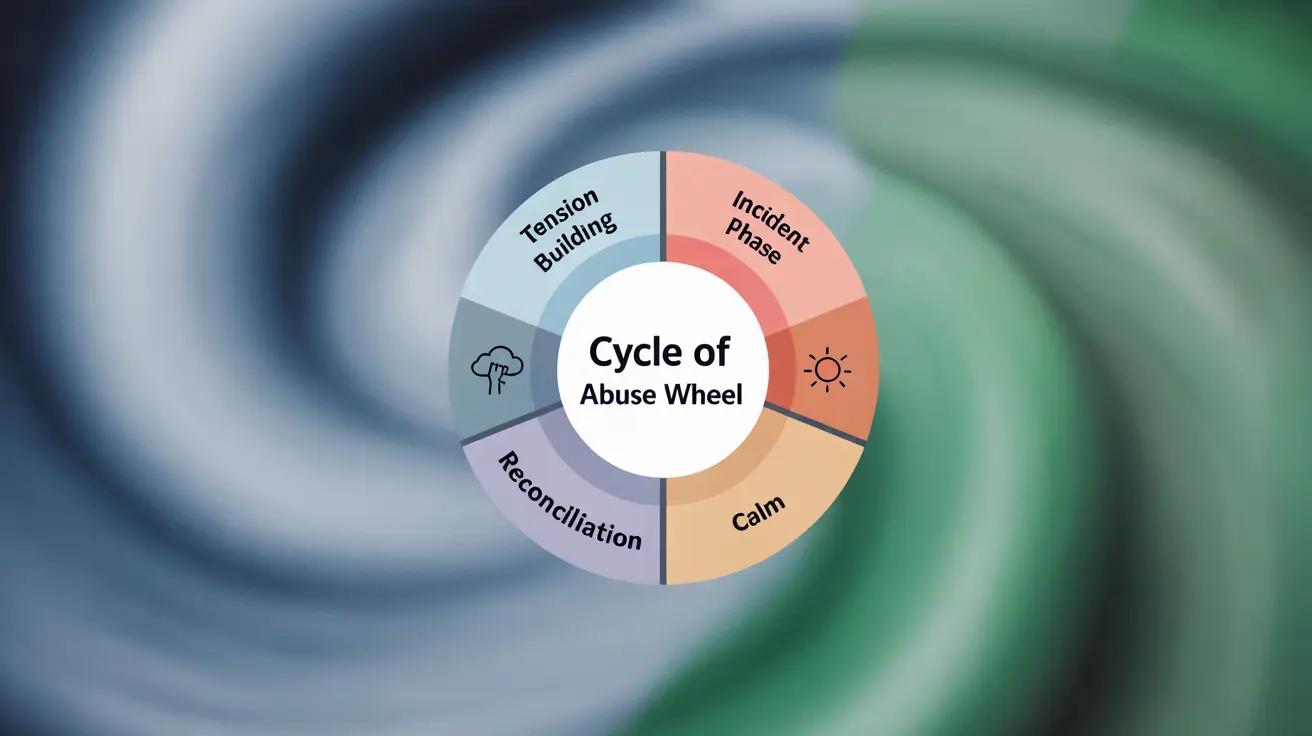The cycle of abuse wheel is a crucial tool for understanding and identifying patterns of domestic violence and abusive relationships. This recurring pattern of behavior consists of four distinct phases that help explain why abuse continues and why breaking free can be challenging for survivors. Understanding these cycles is the first step toward recognition and seeking help.
Whether you're experiencing abuse, supporting someone who is, or seeking to educate yourself, knowledge of these patterns can be lifesaving. Let's explore each phase of the cycle and understand how this knowledge can empower survivors to break free from abusive situations.
The Four Phases of the Cycle of Abuse
Phase 1: Tension Building
During the tension-building phase, stress and strain begin to accumulate in the relationship. Common signs include:
- Minor incidents of verbal abuse
- Passive-aggressive behavior
- Growing hostility
- Walking on eggshells
- Increased criticism and blame
This phase can last days, weeks, or even months, with tension gradually escalating until it reaches a breaking point.
Phase 2: Incident Phase
The incident phase marks the explosive culmination of built-up tension. During this phase, abuse manifests in various forms:
- Physical violence
- Severe emotional abuse
- Verbal attacks
- Threats and intimidation
- Property destruction
This phase is often the shortest but most dangerous part of the cycle, potentially putting victims at serious risk of harm.
Phase 3: Reconciliation (Honeymoon) Phase
Following the incident, the abuser typically shows remorse and attempts to repair the relationship. Characteristic behaviors include:
- Excessive apologies
- Promises to change
- Gifts and loving gestures
- Blaming external factors
- Minimizing the abuse
This phase can be particularly confusing for victims, as it often reinforces hope for lasting change.
Phase 4: Calm Phase
The calm phase represents a period of relative peace, though it's ultimately temporary. During this time:
- Abuse appears to have stopped
- The relationship feels "normal"
- Both parties may deny or minimize previous incidents
- The abuser may follow through on some promises
- The victim may feel optimistic about change
Breaking the Cycle
Understanding the cycle of abuse wheel is crucial for breaking free from abusive relationships. Recognition of these patterns helps survivors:
- Identify warning signs earlier
- Understand it's not their fault
- Realize the pattern will likely continue without intervention
- Make informed decisions about their safety
- Seek appropriate support and resources
Frequently Asked Questions
What are the four stages of the cycle of abuse as shown on the cycle of abuse wheel?
The four stages are: (1) Tension Building, where stress and conflict gradually increase; (2) Incident Phase, involving actual abuse; (3) Reconciliation or Honeymoon Phase, where the abuser shows remorse and makes promises; and (4) Calm Phase, a period of apparent normalcy before the cycle begins again.
How can recognizing the cycle of abuse wheel help survivors break free from abusive relationships?
Recognition helps survivors understand that the abuse follows a predictable pattern and isn't their fault. This awareness enables them to anticipate dangerous phases, plan for safety, and recognize that abuser's promises of change during the reconciliation phase are typically temporary, empowering them to make informed decisions about leaving.
What behaviors or signs occur during the tension-building and incident phases of the cycle of abuse?
During tension-building, signs include increasing criticism, passive-aggressive behavior, and mounting hostility. The incident phase involves actual abuse, which may include physical violence, severe emotional abuse, threats, and aggressive outbursts.
Why do abusers apologize or act loving during the reconciliation (honeymoon) phase of the abuse cycle?
Abusers use apologies and loving behavior during the reconciliation phase to maintain control over their victims, prevent them from leaving, and justify their actions. This behavior reinforces the victim's hope for change and makes it harder to recognize the cycle of abuse.
How can understanding the calm phase in the cycle of abuse make it harder for victims to leave?
The calm phase creates a false sense of security and hope, making victims believe the abuse has ended permanently. This period of peace can cause victims to doubt their experiences, minimize the severity of past abuse, and convince themselves that the relationship has improved, making it more difficult to recognize the need to leave.




